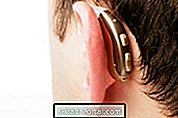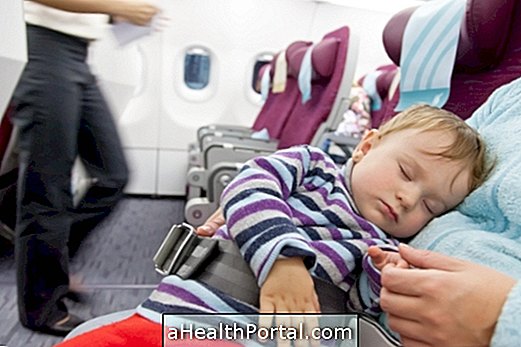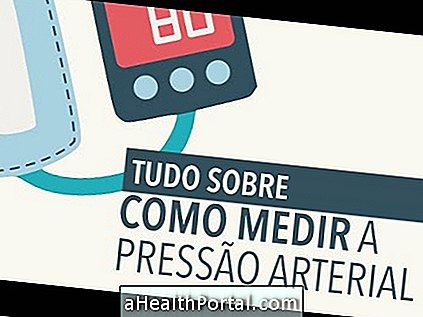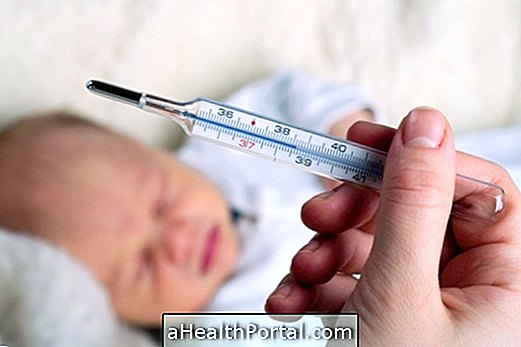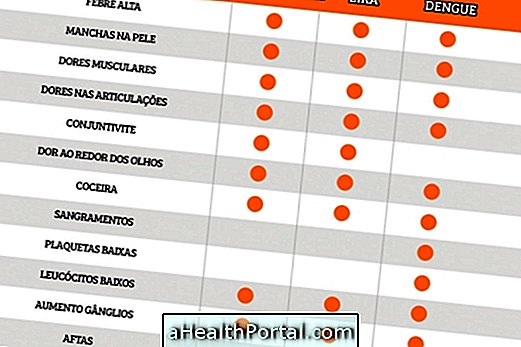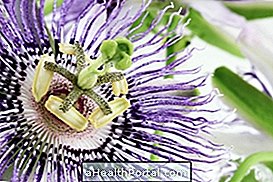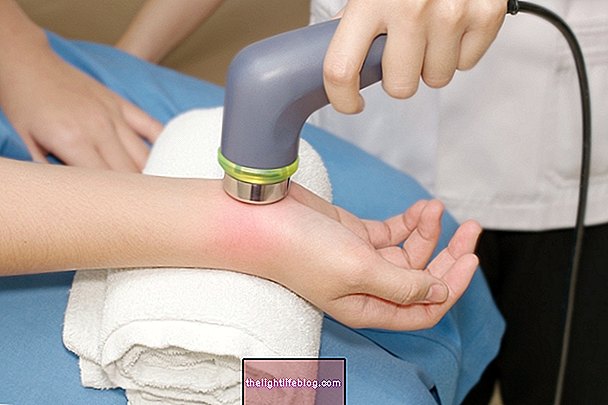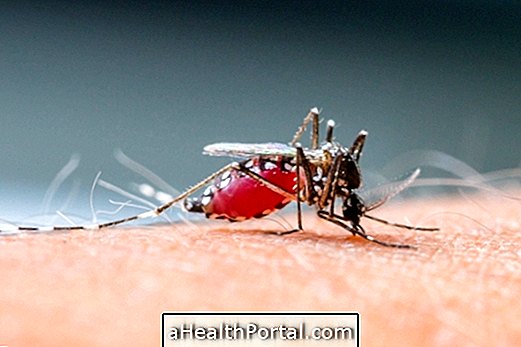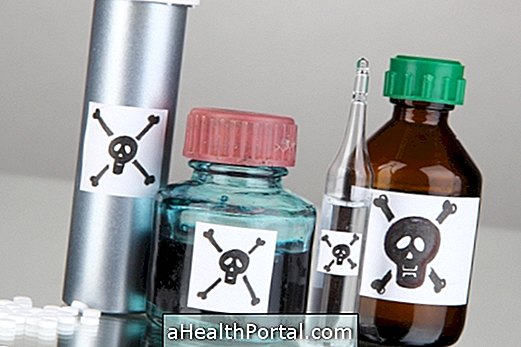To care for the newborn at home, parents need to spend a lot of time on the baby, as he is very small and fragile and needs a lot of attention.
In this way, parents should seek to maintain the comfort of the newborn, to grow strong and healthy, avoiding diseases such as infections or delayed growth. Thus, parents should feed the baby and change the diaper every 3 hours and, showering at least 3 times a week, for example, in addition to never leaving the baby alone.
In addition, in the first 2 weeks, the baby usually loses up to 10% of the birth weight, so parents should not be worried, and from there they are expected to gain weight every week and grow.
How to prepare the room of the newborn
The baby's room should be simple and always clean, to avoid accumulation of dust and bacteria that are harmful to health, and should be equipped with at least:
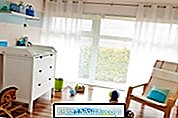


- 1 diaper change to change the diaper and dress and undress the baby easily;
- 1 comfortable chair or armchair for the mother to nurse;
- 1 closet for baby clothes and bed linen;
- 1 crib or bed, which should have waterproof mattress and cotton sheets and blankets and bars with bars should have spacing less than 6 cm so the child does not pass and fall and the baby can sleep alone since birth.
In addition, the baby's room should be large and airy, maintaining a comfortable temperature, ranging from 20 to 22 ° and the floor should not have carpets so parents do not trip many toys, especially plush.
How to give the baby a first shower
The newborn should be showered 3 times a week and whenever it is dirty and the bath should only be done with water during the first 15 days, because your skin is very fragile and it is essential to always hold the baby's head.
From there, you can use soap with neutral pH and no alcohol and you do not have to use shampoo, washing the hair with the same product for the body.


Thus, to carry out your hygiene of the newborn you must:
- Bath, bucket shantala or ofuro with a maximum of 20 cm of water at 37º;
- Compresses and saline for cleaning the eyes and nose;
- Soft, lint-free towel ;
- Scissors with round tips if nails need to be cut;
- Brush or comb for hair;
- She changes her clothes, which must be kept open and arranged in the order she will be dressed;
- 1 clean diaper to change;
- Creams, in some cases only, for dry skin or erythema of the diaper, for example.
The bath should be quick, not to exceed 10 minutes to not change the composition of the baby's skin and, it can be given at any time of day except after the milk. Read more in: Newborn baby bath.
How to dress the newborn in summer and winter
The baby's clothing should be of cotton, without ribbons, hair, elastics or buttons and if possible, you should wear 2 separate pieces, such as blouse and pants, because it is easier to wear and change.
To avoid irritation of the baby's skin, one should cut out all the labels and one should dress only one more piece of clothing that the parents are wearing, for example if the father has 2 blouses the baby should only have 3.


In winter, the outer clothing should be made of wool, because it is warmer and the summer clothes of cotton all cotton, one should not buy too much clothes, because the baby grows very fast.
In addition, baby clothing should be laundered apart from adult clothing, with a small amount of non-biological liquid product and drying the clothing on the machine will make it softer. Read more in: How to know if your baby is cold or hot.
How Baby Feeding Should Be
The newborn is usually fed through breast milk which is the best food for the baby to grow healthy. However, in some cases, the newborn needs to make artificial milk that is given through the bottle.
Breastfeeding
The baby should nurse whenever he wants, so there is no set frequency for breastfeeding, however, it is common for the baby to be hungry every 3 hours during the day and should not spend more than 4 to sleep without eating, even at night, and each feed takes an average of 20 minutes, being faster at first and then slower.
The mother can breastfeed in the seated or lying breast, the important thing is that the baby is making a proper handle, which implies that the baby touches the chin on the breast, keep the mouth open and lips out, pick up the halo and not just the beak and being able to hear the swallowing of the milk. Learn how to breastfeed in: How to breastfeed.


Bottle of formula
When the woman does not produce enough milk for the baby to grow, artificial formula must be given, however, it should only be started after the pediatrician has been told. The baby who takes artificial milk is usually less hungry because the milk is heavier, but it should not be more than 4 hours without being fed.
To give the bottle it is necessary to prepare the milk and for this it is due to:
- Boil water for 5 minutes;
- Pour the water into the bottle and let it cool to room temperature;
- Pour the milk powder, with 1 flat spoon corresponds to 30 ml of water;
- Shake the breast milk until the liquid is homogeneous;
- Give milk to the newborn in a glass or bottle and give the head and back to the arm and keep the baby in a semi-seated position and keep the teat filled with milk.
In the end, you should put the baby to burp, which is to help burp to pour the excess air from the stomach and, for this, you have to put it upright and tapping your back.
Cleaning the umbilical stump
The umbilical stump, which is the rest of the umbilical cord that stays in the navel of the baby, should be disinfected at least once a day, after bathing and touching the stump does not cause pain to the baby, so you can move without fear . Generally, the stump falls around the 4th to 15th day of life and to do its cleaning it is necessary to:
- By alcohol at 70º in the sterilized compress;
- Hold the clip with one hand;
- Clean the umbilical stump of the skinned region for the clip, passing the compress only once and throwing it in the trash next.
After the umbilical cord has fallen, continue to be cleaned with saline until completely dry and uninjured, and the diaper should be folded below the navel to avoid wetting and causing infection, which causes symptoms such as redness, greenish fluid, loss of blood or strong and unpleasant smell, for example.
How to know why the baby is crying
In most cases, crying is the baby's primary way of alerting the parents to some discomfort, such as dirty diaper, hunger or fear, and it is important to identify the type of crying in order to calm the baby.
To understand the crying one must be aware of the sound and movements of the baby's body, which usually help to identify the reason for crying.
| Reason for crying | Description of crying |
| Pain or colic | I cry acutely and short but very loud, staying for a few seconds without crying but with the red face and the fists closed, followed by another cry and not even stop being caught in the lap. The pain can be triggered by colic, which is most common up to 4 months in infants who take artificial milk. |
| Hunger | She sobs sobbing and shakes her head sideways, keeping her mouth open. |
| Fear or boredom | He whimpers but calms down when talking to him or picking himself up. |
| Tiredness | It is a typical cry of the end of the day and the newborn cries, moaning and frowning and forehead. |
Some ways that can help calm the newborn include finding a quiet environment, massaging, breastfeeding or wrapping a mantar. Learn more techniques in: 6 Ways to make baby stop crying.
Keeping the Newborn Safe
To keep the newborn baby safe, he should never be alone as it is too small and fragile. In this way, some security measures must be maintained, such as:
- Always observe the baby, never leaving him alone;
- Do not carry the newborn kitchen while you are cooking, check the temperature of the bath water and milk, to avoid burns;
- Always lie on your stomach with your head on your side, touching your feet at the bottom of the bed and keeping your bedding fastened to the baby's aid to avoid choking;
- Carry the baby in a seat that belongs to the 0+ group, which is suitable for the baby's weight and size.
- Stop the cart or egg when it is stationary and do not place it in high places to avoid falls;
- In the car, place the seat in the back seat, preferably in the middle place, with your back to the traffic direction and in case the car has only 2 seats, the child can be transported to the front, however it is necessary to deactivate the airbag system ;
- Avoid contact with animals with fur as it can cause respiratory infections.
All these care helps the newborn to be safe and grow in a healthy way, preventing the onset of disease.
